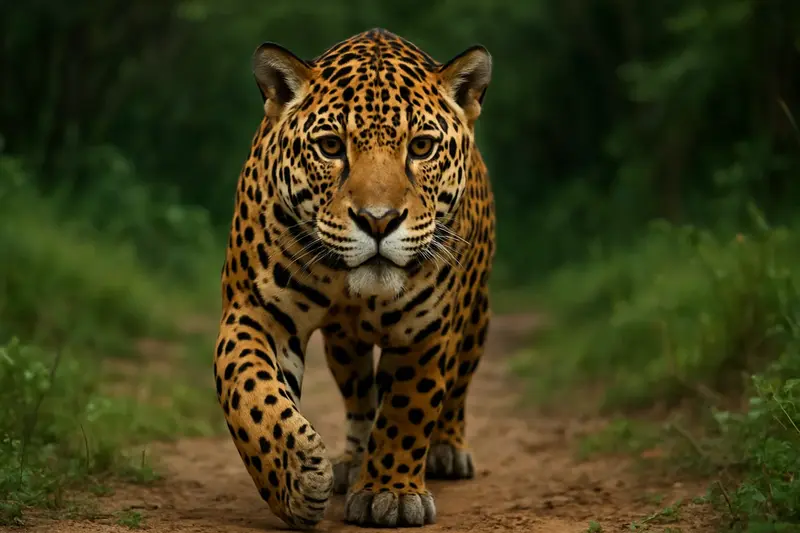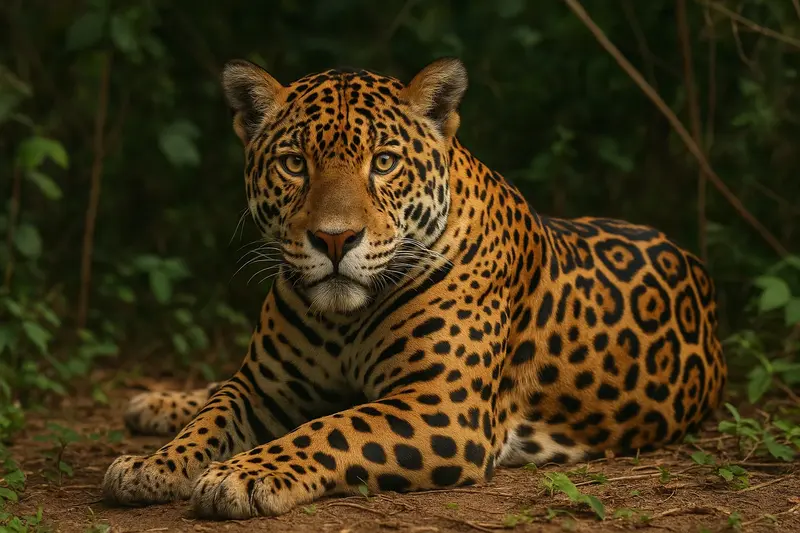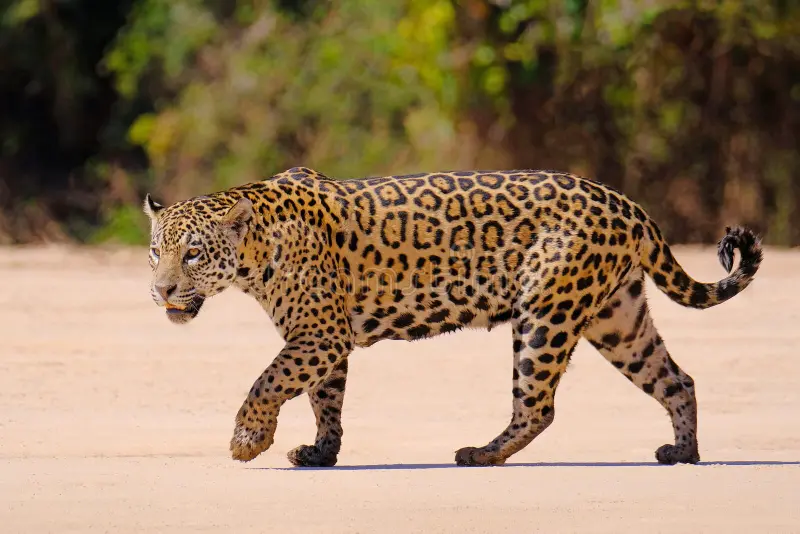Panthera onca
IUCN
LCBasic Information
Scientific classification
- name:Panthera onca
- Scientific Name:Panthera onca,Jaguar,Jaguar, jaguar
- Outline:Carnivora
- Family:Schizopoda Felidae Panthera
Vital signs
- length:110-180cm
- Weight:35-150kg
- lifetime:About 22 years
Feature
It has a leopard-like appearance and pattern, a tiger-like body, a shorter tail, and tumor-like protrusions on the inside of its eye sockets.
Distribution and Habitat
In the past, jaguars only lived in Central and South America. Until the mid-20th century, people also found jaguars in the southwestern United States, but mainly due to human settlement, jaguars have lost two-thirds of their original habitat. Today, they live in the area from south of Mexico to north of Argentina, and their main habitat is in the Amazon Basin.
Jaguars prefer to live in densely wooded rainforests and seasonally flooded swamps, as well as nearby bushes and tropical savannas, but they are always near water sources. They are also widely distributed in different places such as mountains and plains.
Appearance
The jaguar weighs 35-150 kilograms, has a body length of 110-180 centimeters, a tail length of 0.5-0.75 meters, and a shoulder height of 0.7 meters.
Jaguars and leopards have similar appearance patterns, but their body shape is more like that of a tiger, and their tails are shorter. In particular, the main feature is the tumor-like protrusions on the inside of the eye sockets. This tumor-like protrusion is not found in leopards, tigers and other animals of the genus Panthera. of.
The jaguar's head is proportionally larger, the face is wider, the chest is thicker, the body is thicker, the muscles are plump, and the limbs are thick and short. The pattern on the body is beautiful, the black circular rings are larger, and there are usually one or several black spots in the rings. Because they are rings instead of stripes, they are easy to distinguish from tigers, but their rings are also It is significantly different from the smaller and hollow ring pattern of the leopard, and i
Details
The scientific name of the jaguar is Panthera onca (Linnaeus, 1758), and its foreign name is Jaguar, also known as the jaguar. It is the third largest cat species in existence.
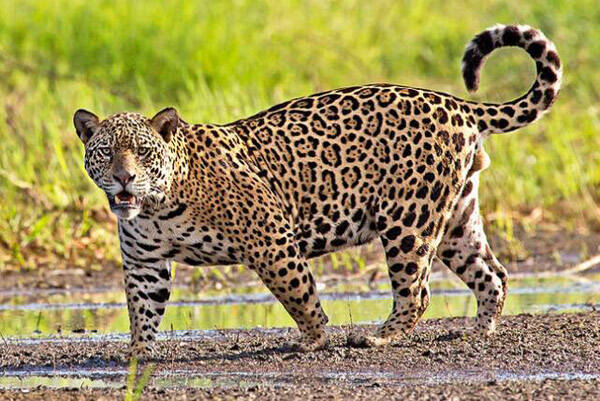
Jaguars live in water-rich areas and, like tigers, are cats that love to swim. Jaguars love to travel alone, are dormant predators, and are completely opportunistic in choosing prey. They are top predators and keystone species, and they play a pivotal role in balancing ecosystems and regulating the number of prey.
The jaguar's habitat is complex, mainly tropical dense forests, gradually expanding to shrubs, grasslands, semi-deserts and rocky mountains. It acts alone, hiding in the forest to rest during the day, and preying on deer, monkeys, birds, crocodiles, snakes and fish in the evening or at night. It is good at swimming, climbing, running and climbing trees. However, due to the reduction of the range of activities under captive conditions, the activity space is restricted, which reduces its own motor function; artificial cleaning of cages and conditioned reflexes of feeding food weaken the animal's ability to hunt; the noise of tourists reduces the sensitivity to danger, making the jaguar's activity behavior pattern compatible with human feeding and management activities. This life pattern that is compatible with feeding and management is an adaptability of jaguars that have been in artificial breeding conditions for a long time to artificial domestication. This adaptation is a kind of wild degeneration for jaguars, disrupting the normal survival rules of jaguars.
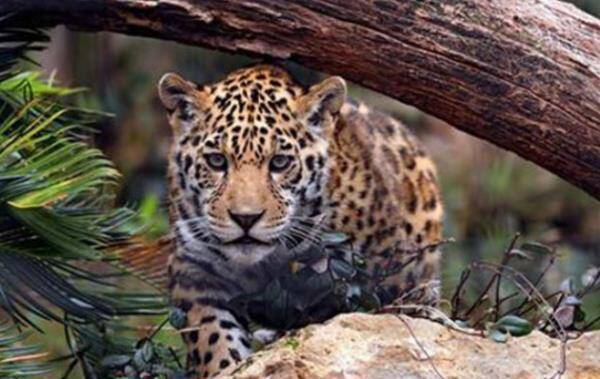
The territories of jaguars can overlap with each other. The territory of male jaguars is twice as large as that of female jaguars, and may overlap with multiple female jaguars. The range of activities is about two to three kilometers, and the maximum can be nearly sixty kilometers. It can make a variety of calls to express emotions. Its sharp teeth are also capable of crushing the skulls and shells of prey. It is at the top of the food chain in South America. Its food includes fish, sloths, capybaras, deer, agoutis, wild boars, arapaima, anteaters, monkeys, freshwater turtles, crocodiles, etc. It occasionally preys on large anacondas.
Jaguars do not have a fixed breeding season. They usually mate in early spring. Females usually give birth once every year or longer. The gestation period is 100-110 days, and each litter has 2-4 cubs. Six weeks after the cubs are born, they will go out hunting with the females. They will leave the females after one and a half years. They will reach sexual maturity at the age of 3-4, but will not fully grow until about 5 years. For most of the time when the cubs are not yet adults, they will be closely protected and carefully guided by the females at all times.
Educating the cubs is a painstaking process. The female first teaches them to take a bath frequently, which helps them get used to activities in the water and enhance their abilities and muscle elasticity. They also need to be taught to swim and stand firmly in the water, so that they can understand the phenomenon of underwater light refraction. The female always pays close attention to the development of the cubs and often plays games with them, which can also help the female understand the growth of the cubs' strength and the improvement of their independence. When the female believes that the cubs have certain abilities, she begins to let them move freely. The life span of a jaguar is about 22 years.
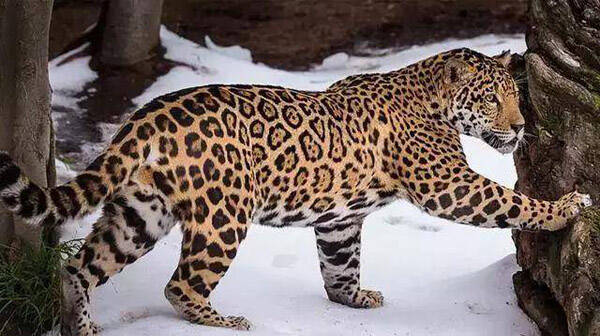
The jaguar is one of the precious ornamental animals. In South America, people in many countries and regions, especially the Toltecs, Mayans and Alantes, worship it as a beautiful god and are revered by people, which has played a positive role in the protection of the jaguar. South American Indians also always portray the jaguar as an animal that can defeat all opponents in wisdom and fighting, but it is always at a disadvantage in the competition with humans.
Listed in Appendix I of CITES
Listed in IUCN Low Risk, Near Threatened
In the Convention on International Trade in Endangered Species of Wild Fauna and Flora, the jaguar is listed in Appendix II.
Listed in the IUCN Red List of Threatened Species in 2021 - Near Threatened (NT).
Protect wild animals and stop eating game.
Maintaining ecological balance is everyone's responsibility!
FAQ
1. What is the difference between a jaguar and a leopard?
Answer: Jaguars live in the Americas, are more robust, and have larger ring-shaped spots with black spots in the middle; leopards are distributed in Africa and Asia, are smaller, and have denser and more fragmented spots.
2. Where is the main habitat of the jaguar?
Answer: Jaguars are mainly distributed in rainforests, wetlands and rivers in Central and South America, and prefer humid and densely vegetated environments.
3. What are the hunting habits of jaguars?
Answer: Jaguars are powerful predators, usually acting alone, and ambush their prey, including deer, wild boars, caimans and various fish.
4. Is the jaguar an endangered species?
Answer: Yes, the jaguar is currently listed as a near-threatened species, with habitat loss, illegal hunting and human conflict as the main threats.
5. How long does a jaguar live?
Answer: Jaguars in the wild usually live 12 to 15 years, and can live for more than 20 years in captivity.

